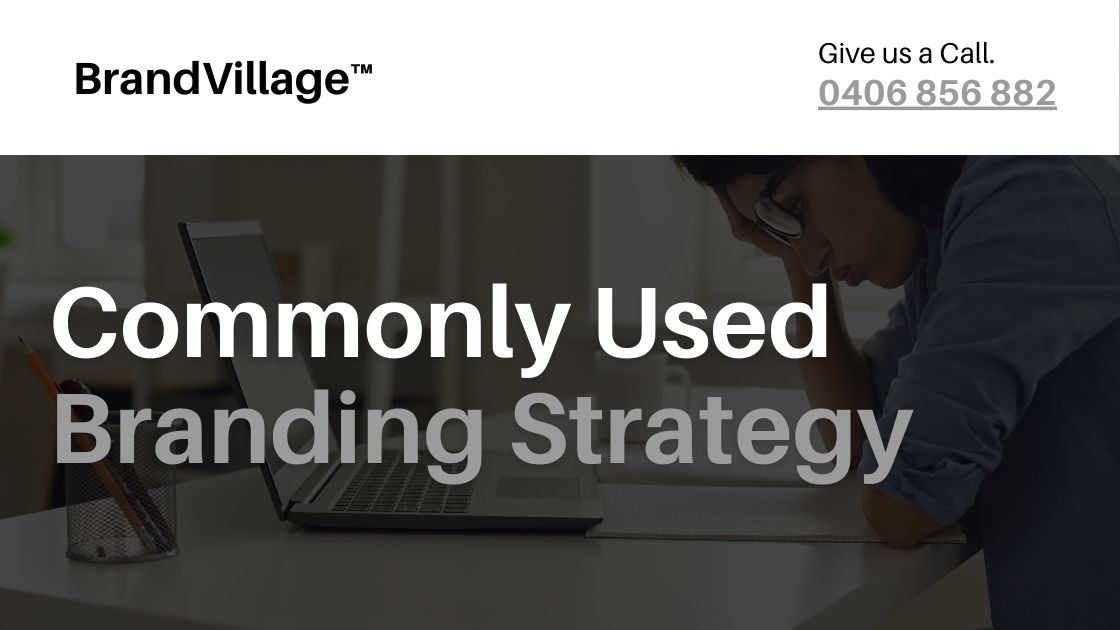How to Build a Graphic Design Portfolio?

Published: February 17, 2024
Creating a graphic design portfolio is essential for any designer looking to showcase their talents and connect with potential clients, employers, and collaborators. It’s more than just a collection of your work; it’s a reflection of your journey, your ability to solve problems creatively, and your skill in visual communication.
To build a stand-out portfolio, you must think strategically, brand yourself effectively, and carefully select projects that best represent your abilities and appeal to your desired audience.
Drawing inspiration from our portfolio at BrandVillage, a graphic design agency in Melbourne, a successful portfolio must require careful selection and presentation of work to tell a cohesive narrative.
A great portfolio not only highlights your design skills but also weaves a compelling visual narrative that engages viewers. It showcases your best projects, demonstrating your readiness for future challenges and underscoring your value in a competitive field.
If you’re finding it challenging to create your portfolio, let me (Kate Manks) guide you. We understand the importance of a well-structured, interactive, and captivating portfolio for graphic design professionals. Follow along as we share our insights on designing a portfolio representing you and your work.
Scroll down to explore more!
What is a Graphic Design Portfolio?

A graphic design portfolio is essential for any designer looking to showcase their talent and work history in the graphic design field. It acts as a visual resume, presenting a collection of your most compelling design projects in a way that highlights your creativity, versatility, and technical skills. This portfolio serves not just as a gallery of your best work or graphic design style but as a reflection of your ability to execute and innovate ideas with precision and care.
In 2024, An online portfolio expands the traditional boundaries, allowing designers to create an interactive and engaging experience for visitors. It’s not merely about displaying images and descriptions of past projects; it’s about crafting a narrative that communicates your design philosophy, approach to problem-solving, and attention to detail.
Creating an online portfolio has become more accessible thanks to various website builders tailored to meet the needs of creative professionals. Platforms like Squarespace, Wix, and Cargo offer user-friendly interfaces and customisable templates, making it easier for designers to build a professional online presence.
A well-constructed graphic design portfolio is a pivotal asset in making a memorable impression on potential clients and employers, showcasing not just what you have achieved but what you are capable of. Our professional graphic design experts at BrandVillage are here to help you build the best portfolio!
Steps to Build a Graphic Design Portfolio

Step 1: Planning Your Portfolio

Planning for your portfolio is one of the essential and most crucial steps. Begin by defining the portfolio’s purpose, whether it’s for job hunting, securing freelance projects, or another goal. This decision shapes the portfolio’s content, design, and structure, ensuring it aligns with your career aspirations.
Next, identify your target audience. Tailor your portfolio to appeal to the specific needs and preferences of potential clients or employers in your desired industry. Consider the types of projects, skills, and design styles that resonate most with them. Understanding your audience allows you to curate a portfolio that not only highlights your best work but also clearly communicates your unique value and capabilities in a way that aligns with their expectations.
Step 2 – Select a Website Builder for a Graphic Design Portfolio

Selecting the right website builder is another essential step in crafting an online graphic design portfolio. The ideal platform should align with your technical skills, resources, and specific needs, balancing user-friendly design capabilities and advanced features.
Today’s market offers a variety of website builders that cater to creative professionals, featuring drag-and-drop interfaces, optimisation tools, and even AI-powered functionalities to streamline the portfolio creation process.
For those seeking simplicity without sacrificing quality, platforms with intuitive design interfaces allow for constructing professional-looking portfolios without coding knowledge. These builders often come with portfolio-specific templates, ensuring your work is showcased in the best light possible.
Innovations like AI Website Builders can further simplify the process, generating a tailored portfolio with content and design elements. Additionally, tools such as AI-powered text generators and logo makers assist in creating a cohesive brand identity across your portfolio.
Step 3: Choosing a Layout and Template

Select a portfolio-specific template that aligns with your aesthetic preferences and professional identity. These templates are designed to highlight creative work, offering a balance between visual appeal and functionality.
Whether you opt for a symmetrical layout for a balanced, clean look or an asymmetrical layout to introduce dynamism and a sense of movement, ensure the design complements your projects without overshadowing them.
Customisation is key; even with a template, you can modify elements such as colours, fonts, and imagery to tailor the portfolio to your brand. This adaptability allows you to create a cohesive online presence that feels like an extension of your work.
The goal is to pick a layout that not only presents your projects in the best light but also provides an intuitive user experience, making your portfolio memorable and engaging for visitors.
Step 4: Securing a Domain Name

Choosing and registering a domain name is critical in establishing your online presence as a graphic designer. Your domain name is your digital address, making it crucial for portfolio recognition and ease of access for potential clients.
Tips to Choose a Memorable Domain Name for Graphic Design Portfolio
- Keep it Short: A short domain name is easy to remember and type. Aim for something simple that sticks in people’s minds.
- Use Your Name: Many designers use their name for a personal touch, like “katemankdesign.com.” It’s professional and directly links your name to your work.
- Make it Relevant: Your domain should reflect what you do. Adding words like “design” helps clarify your services right in the URL.
How to Choose a Domain Name for Your Graphic Design Portfolio?
- Start by picking a place to register your domain. There are many services for domain names, so choose one that’s well-reviewed.
- Use the service’s search tool to see if your desired name is available. Try variations or different endings (like .net or .design) if it’s taken.
- Once you find the perfect available name, follow the steps to register it. You’ll need to fill in some details and decide how long to register it for.
- Consider adding privacy protection. This keeps your personal contact information private, which can be a smart move for your online safety.
Step 5: Showcasing Your Best Work

Putting together a standout graphic design portfolio means picking top projects showing off your skills and style. Here’s how to make your work shine:
- Pick Your Best Projects – Choose work that shows your creativity and skill. Look for projects that got great feedback or that you’re really proud of. These should show what you can do, from logos to websites and everything in between.
- How Many Projects to Include– Less is more. A few amazing projects (about 8 to 12) are better than many okay ones. This keeps your portfolio focused and makes sure each project really stands out.
- Arrange Your Work Well – Mix it up. Show different kinds of work to highlight your versatility. Start and end with your strongest pieces to grab attention right away and leave a lasting impression. You can also group projects by theme or type of work to make it easy for people to see your range.
Step 6: Creating Compelling Content

Creating the right content for your graphic design portfolio is as crucial as the designs themselves. Here’s how to make your content engaging and professional:
- Write Engaging Project Descriptions – Provide a short description outlining the project’s objective, your approach, and the results achieved for each project. Explain the challenge you faced and how your design provided a solution. Keep your language clear and straightforward to demonstrate your strategic thinking and effectiveness as a designer.
- Include an “About Me” Section – Personalise your portfolio with an “About Me” section. Share your design philosophy, your journey in the design world, and what drives your creativity. This personal touch helps viewers connect with you beyond your work, making your portfolio more memorable.
- Add a Contact Section – Ensure potential clients or employers can easily contact you by including a contact section. List your professional email address and, if relevant, your social media handles or a contact form. This section is crucial for opening the door to future opportunities and collaborations.
Step 7: Enhancing Your Portfolio’s Design With Best Navigation and Professional Touches

Giving your graphic design portfolio a unique and professional appearance is crucial for making a lasting impression. Here’s how to elevate your portfolio’s design:
- Customising the Template to Suit Your Style and Brand – Even if you start with a template, personalising it is key to reflecting your identity as a designer. Adjust visual elements like colour schemes, fonts, and imagery to align with your brand. This customisation doesn’t just make your portfolio look good; it infuses it with your unique personality, helping it stand out. Think of your portfolio as a canvas where your design sensibilities and professional ethos are fully displayed.
- Implementing Best Practices for Navigation and User Experience – A great design isn’t just about aesthetics; it’s also about how easily visitors can navigate your portfolio and access your work. Ensure your site’s layout is intuitive, with a clear structure that seamlessly guides visitors through your projects. Incorporate smooth scrolling effects, well-organised galleries, and responsive design to ensure your portfolio is as user-friendly as it is visually appealing. Remember, a portfolio that offers a memorable user experience will likely keep potential clients and employers engaged and interested in your work.
Step 8: Publishing and Sharing Your Portfolio

After meticulously crafting your graphic design portfolio, the final step is to launch it into the world. Here’s how to ensure a smooth publication and effectively share your work:
Reviewing Your Portfolio Before Publishing – Conduct a thorough review before making your portfolio public. This includes checking for typos, ensuring all links work correctly, and verifying that your portfolio displays well on various devices. Getting feedback from peers or mentors is also wise to catch any issues you might have overlooked. This step is crucial for presenting a polished and professional portfolio that accurately reflects your skills and attention to detail.
Strategies for Sharing Your Portfolio with Your Target Audience
Once your portfolio is live, it’s time to share it with your personal and professional circles. Start by notifying family, friends, and colleagues about your new portfolio. They can offer support and may help spread the word about your work.
Social media platforms are invaluable tools for reaching a broader audience. Tailor your sharing strategy to each platform to engage your followers effectively. For example, use Instagram to share visuals from your portfolio, LinkedIn for professional networking, and Twitter for quick updates or sharing design insights.
Additionally, consider joining online design communities and forums where you can share your portfolio link. Participating in these communities can increase visibility and open opportunities for feedback, collaboration, and new projects.
Note – Always try to update your graphic design portfolio according to the graphic design trends to maintain its relevancy and keep it updated.
Conclusion
Planning and executing a graphic design portfolio journey is exciting and daunting. However, the importance of a well-crafted portfolio cannot be overstated—it’s your visual resume, your brand, and often the first impression you make on potential clients or employers. It showcases not just your past work but your potential for future projects.
So, I encourage you to start building your portfolio today. Take that first step, and remember, your portfolio will evolve as you do; it’s a living document of your creativity and skills.
At BrandVillage, we understand a portfolio’s pivotal role in a designer’s career. We’ve dedicated ourselves to designing graphic design portfolios that not only highlight the breadth and depth of your work but also encapsulate your unique style and personality. Our approach is collaborative and personalised, ensuring that your portfolio not only meets industry standards but also stands out in the competitive landscape of graphic design.
Connect with our expert designers now to know more!
Articles.

July 2024
What is a Website Hosting Service?
Did you know that 88% of web users abandon sites due to poor performance? Also,...

July 2024
What is Branding in Marketing?
Branding sets a business apart, influencing: 34.6% of shoppers to repurchase 89% buy from...

July 2024
7 Commonly Used Branding Strategy
In Melbourne’s vibrant and ever-evolving market, a strong brand is no longer an option;...